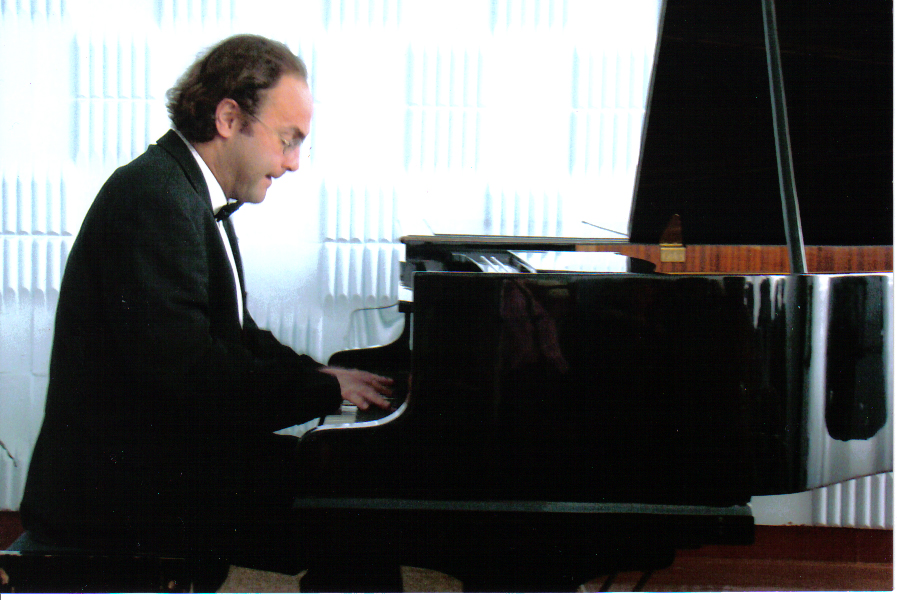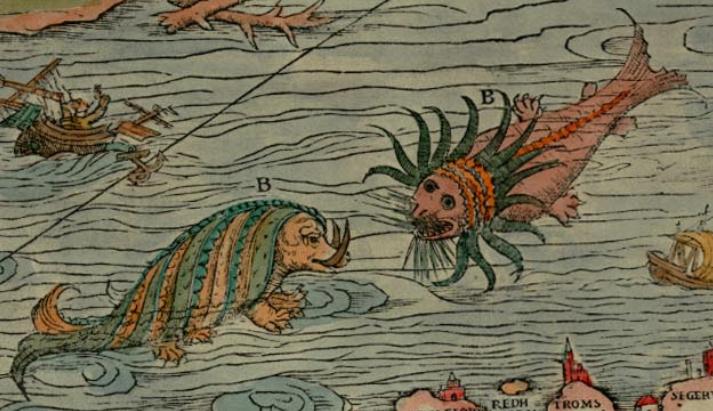|
Verdi Transcriptions (Finnissy)
The 36 ''Verdi Transcriptions'' for piano by the British composer Michael Finnissy were composed between 1972 and 2005. They are based on the works of Giuseppe Verdi. Background The '' Transcriptions'', in the words of the composer, "are ...not simply about Verdi. They form a critique of a musical culture which is over-saturated in its past...by dissection, analysis, parody, and by self-dramatised intent." In four books of nine pieces each, they include in chronological sequence at least one transcription from each of Verdi's operas, together with one transcription drawn from his string quartet, and conclude with a transcription of the first section of his '' Requiem''. In creating the ''Transcriptions'' Finnissy was influenced by the concepts of Ferruccio Busoni, who believed that musical notation "is itself the transcription of an abstract idea. The moment that the pen takes possession of it, the thought loses its original form". The implication is that all composition is a ... [...More Info...] [...Related Items...] OR: [Wikipedia] [Google] [Baidu] |
Michael Finnissy
Michael Peter Finnissy (born 17 March 1946) is an English composer, pianist, and pedagogue. An immensely prolific composer, his music is "notable for its dramatic urgency and expressive immediacy". Although he rejects the label, he is often regarded as the foremost composer of the New Complexity movement. Biography Early life Michael Finnissy was born at 77 Claverdale Road in Tulse Hill, London at roughly two in the morning on 17 March 1946 to Rita Isolene (''née'' Parsonson) and George Norman Finnissy. His father was employed at the London City Council. When he was four, he received his first piano lessons from his great aunt Rose Louise (Rosie) Hopwood, soon after writing his first compositions, He attended Hawes Down Infant and Junior schools, Bromley Technical High, and Beckenham and Penge Grammar schools and excelled in graphic art, mathematics, and English literature. Student years Finnissy received the William Hurlstone composition prize at the Croydon Music ... [...More Info...] [...Related Items...] OR: [Wikipedia] [Google] [Baidu] |
Jonathan Powell (musician)
Jonathan Powell (born 1969) is a British pianist and self-taught composer. Biography Powell studied with Denis Matthews and Sulamita Aronovsky. He made his performing debut at the age of 20 in the Purcell Room in London. His repertoire ranges from Bach to contemporary works, including composers as varied as Michael Finnissy, John White, Marco Ambrosini, Johannes Maria Staud and Christophe Sirodeau. He specialises in the works of the late Romantic era, including Russian music and Alexander Scriabin, on whose impact on Russian composers he wrote a dissertation at Cambridge University. Powell also contributed several articles to the second edition of ''The New Grove Dictionary of Music and Musicians'', including the one on Scriabin, and has published articles on various Soviet and Russian composers.Roberge, p. 384 Powell is best known for his advocacy of Sorabji's music, which he began performing regularly in the early 2000s. He has given 10 public performances of Sorabji' ... [...More Info...] [...Related Items...] OR: [Wikipedia] [Google] [Baidu] |
BBC Music Magazine
''BBC Music Magazine'' is a British monthly magazine that focuses primarily on classical music. History The first issue appeared in September 1992. BBC Worldwide, the commercial subsidiary of the BBC was the original owner and publisher together with the Warner Music Enterprises during its initial phase. Immediate Media Company has been the publisher since 2012. ''BBC Music Magazine'' has also an edition in North America which was first published in March 1993. The magazine reflects the broadcast output of BBC Radio 3 being devoted primarily to classical music, though with sections on jazz and world music. Each edition comes together with an audio CD, often including BBC #REDIRECT BBC #REDIRECT BBC Here i going to introduce about the best teacher of my life b BALAJI sir. He is the precious gift that I got befor 2yrs . How has helped and thought all the concept and made my success in the 10th board exam. ... ... recordings of full-length works. The magazine's circulation ... [...More Info...] [...Related Items...] OR: [Wikipedia] [Google] [Baidu] |
The Gramophone
''Gramophone'' is a magazine published monthly in London, devoted to classical music, particularly to reviews of recordings. It was founded in 1923 by the Scottish author Compton Mackenzie who continued to edit the magazine until 1961. It was acquired by Haymarket in 1999. In 2013 the Mark Allen Group became the publisher. The magazine presents the Gramophone Awards each year to the classical recordings which it considers the finest in a variety of categories. On its website ''Gramophone'' claims to be: "The world's authority on classical music since 1923." This used to appear on the front cover of every issue; recent editions have changed the wording to "The world's best classical music reviews." Its circulation, including digital subscribers, was 24,380 in 2014. Listings and the ''Gramophone'' Hall of Fame Apart from the annual Gramophone Classical Music Awards, each month features a dozen recordings as Gramophone Editor's Choice (now Gramophone Choice). Then, in the annua ... [...More Info...] [...Related Items...] OR: [Wikipedia] [Google] [Baidu] |
Don Carlos
''Don Carlos'' is a five-act grand opera composed by Giuseppe Verdi to a French-language libretto by Joseph Méry and Camille du Locle, based on the dramatic play '' Don Carlos, Infant von Spanien'' (''Don Carlos, Infante of Spain'') by Friedrich Schiller. In addition, several incidents, of which the Forest of Fontainebleau scene and ''auto-da-fé'' were the most substantial, were borrowed from Eugène Cormon's 1846 play ''Philippe II, Roi d'Espagne''. The opera is most often performed in Italian translation, usually under the title ''Don Carlo''. The opera's story is based on conflicts in the life of Carlos, Prince of Asturias (1545–1568). Though he was betrothed to Elisabeth of Valois, part of the peace treaty ending the Italian War of 1551–59 between the Houses of Habsburg and Valois demanded that she be married instead to his father Philip II of Spain. It was commissioned and produced by the Théâtre Impérial de l'Opéra ( Paris Opera) and given its premiere at the ... [...More Info...] [...Related Items...] OR: [Wikipedia] [Google] [Baidu] |
Giovanna D’Arco
''Giovanna d'Arco'' (''Joan of Arc'') is an operatic ''dramma lirico'' with a prologue and three acts by Giuseppe Verdi set to an Italian libretto by Temistocle Solera, who had prepared the libretti for ''Nabucco'' and ''I Lombardi''. It is Verdi's seventh opera. The work partly reflects the story of Joan of Arc and appears to be loosely based on the play ''Die Jungfrau von Orleans'' by Friedrich von Schiller. Verdi wrote the music during the autumn and winter of 1844/45 and the opera had its first performance at Teatro alla Scala in Milan on 15 February 1845. This opera is not to be confused with Rossini's cantata of the same name, which was composed in 1832 for contralto and piano, and runs approximately 15 minutes. Libretto By the middle of the 19th century, the story of Joan of Arc had served as the basis for many operas, including those of Nicola Vaccai (1827) and Giovanni Pacini (1830), both of which were strongly reminiscent of Schiller's play. Solera was asked by V ... [...More Info...] [...Related Items...] OR: [Wikipedia] [Google] [Baidu] |
Grace Note
A grace note is a kind of music notation denoting several kinds of musical ornaments. It is usually printed smaller to indicate that it is melodically and harmonically nonessential. When occurring by itself, a single grace note indicates either an acciaccatura when notated with an oblique stroke through the stem, or an appoggiatura when notated without. When they occur in groups, grace notes can be interpreted to indicate any of several different classes of ornamentation, depending on interpretation. For percussion, such as drums, a related concept are ghost notes — supportive snare-hits at a lower volume. Notation In notation, a grace note is distinguished from a standard note by print size. A grace note is indicated by printing a note much smaller than an ordinary note, sometimes with a slash through the note stem (if two or more grace notes, there might be a slash through the note stem of the first note but not the subsequent grace notes). The presence or absence of a slas ... [...More Info...] [...Related Items...] OR: [Wikipedia] [Google] [Baidu] |
Kraken
The kraken () is a legendary sea monster of enormous size said to appear off the coasts of Norway. Kraken, the subject of sailors' superstitions and mythos, was first described in the modern age at the turn of the 18th century, in a travelogue by Francesco Negri in 1700. This description was followed in 1734 by an account from Dano-Norwegian missionary and explorer Hans Egede, who described the kraken in detail and equated it with the ''hafgufa'' of medieval lore. However, the first description of the creature is usually credited to the Norwegian bishop, Pontoppidan (1753). Pontoppidan was the first to describe the kraken as an octopus (polypus) of tremendous size, and wrote that it had a reputation for pulling down ships. The French malacologist, Denys-Montfort, of the 19th century is also known for his pioneering inquiries into the existence of gigantic octopuses. The great man-killing octopus entered French fiction when novelist Victor Hugo (1866) introduced the ' octop ... [...More Info...] [...Related Items...] OR: [Wikipedia] [Google] [Baidu] |
Staccato
Staccato (; Italian for "detached") is a form of musical articulation. In modern notation, it signifies a note of shortened duration, separated from the note that may follow by silence. It has been described by theorists and has appeared in music since at least 1676. Notation In 20th-century music, a dot placed above or below a note indicates that it should be played staccato, and a wedge is used for the more emphatic staccatissimo. However, before 1850, dots, dashes, and wedges were all likely to have the same meaning, even though some theorists from as early as the 1750s distinguished different degrees of staccato through the use of dots and dashes, with the dash indicating a shorter, sharper note, and the dot a longer, lighter one. A number of signs came to be used in the late 19th and early 20th centuries to discriminate more subtle nuances of staccato. These signs involve various combinations of dots, vertical and horizontal dashes, vertical and horizontal wedges, and t ... [...More Info...] [...Related Items...] OR: [Wikipedia] [Google] [Baidu] |




